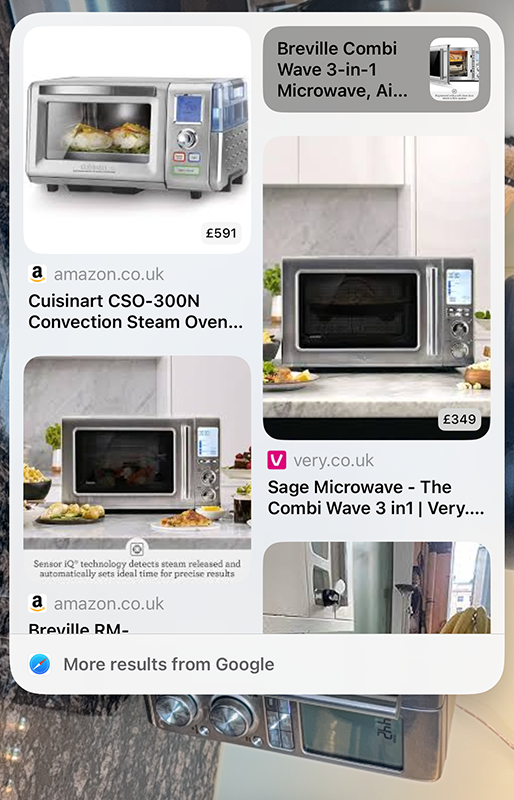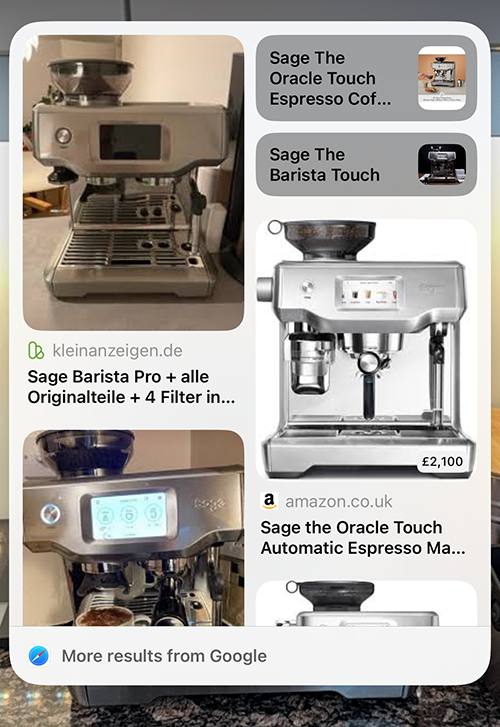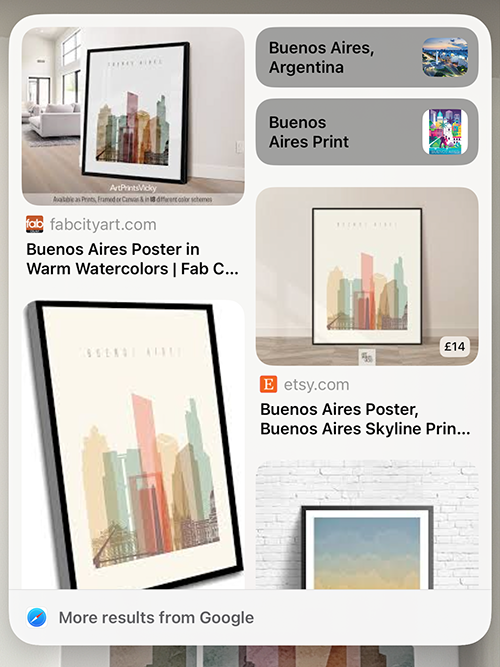I understand this is merely a developer beta, and if Apple decides to inquire, my initial thoughts about Visual Intelligence are offered solely with its future possibilities in mind. However, I must admit that my experience using it has left me eagerly anticipating what’s to come.
The current capabilities of Apple Intelligence are somewhat restricted. Typically, users are given the option to have ChatGPT describe what they see or perform a Google search.
The Actual Apple Intelligence Features
From my observations, Apple Intelligence executes a few specific tasks:
- Summarizing visible text within the scene
- Providing business information via Apple Maps
- Identifying dates and times from text and opening Calendar for those entries
However, when it comes to object recognition, the function seems to rely solely on ChatGPT and Google at this stage. Based on my limited testing thus far, Google’s performance stands out significantly.
Image Recognition with Google and ChatGPT
I typically conduct thorough research before making significant purchases. This involves reading reviews, seeking recommendations from friends, and scanning Google for information comprehensively.
If I spot something in use that piques my interest, I require detailed information: simply indicating that I’m looking at a compact bean-to-cup coffee machine wouldn’t suffice.
So, how does Visual Intelligence v0.1 perform? I evaluated it with several items from around my home.
Firstly, I tested it with my Sage Combi Wave 3-in-1 appliance, which serves as a microwave, oven, and air fryer. In the US, it’s marketed under the Breville brand. Visual Intelligence recognized it right away (first match, top right). While it also listed a competing product, the majority of the top hits were accurate.

Next up was my Sage Barista Touch coffee maker. Visual Intelligence was slightly less confident here, suggesting it could be either that model or the considerably pricier Oracle Touch from the same brand. However, it doesn’t take a lot to deduce which of the two suggestions is accurate. (It also offered a third model, which turned out to be a classified listing with a misidentified photo.)

As for my Aarke Carbonater II sparkling water maker? No issues.

It faced more difficulty with a Reidel O Wine Tumbler, which is understandable due to the presence of many imitations. It primarily displayed the original product alongside direct copies.

When I moved to the living room, it recognized this piece as an Eames Lounge Chair. Since my chair is a millimeter-accurate replica, I can overlook its inability to differentiate between the two.

I also attempted recognition on original artwork by lesser-known (though not entirely obscure) artists, but it proved unsuccessful. Conversely, when it came to identifying a print, it had no trouble at all.

For my Naim Mu-so, it presumed it to be the second-generation model instead of the original, but considering their identical appearance and the fact that most online references pertain to that version, this is entirely justifiable.

I tested it on several other tech items around my home:
- Original HomePod
- Echo Dot
- Philips Hue Switch
- Netatmo Smart Doorbell
It accurately identified all of these.
A Promising Beginning with More to Come
My initial encounter with AI-driven image recognition technology occurred when I tried out Ray-Ban Meta glasses, although extracting useful insights from them required careful phrasing and follow-up questions.
Visual Intelligence appears to surpass this experience already, and it’s the rapid pace of development that truly excites me. With numerous companies vying for advancements in this arena, I anticipate significant progress in a very short time frame.
Of course, there will be moments of misstep, as is the case with all AI technologies, but the beauty of this system is that it adapts and learns from every interaction.
I don’t believe it will be long before we can simply point an iPhone at random products we encounter in stores or on the street and instantly receive an average star rating along with a comprehensive AI-generated summary of the reviews. Typically, it’s Apple eagerly anticipating how we will utilize their new tech; in this case, however, the excitement seems to be coming from the other way around.
If you’ve gained access (I had to wait a couple of weeks), what are your own initial impressions of Visual Intelligence? Please share your thoughts in the comments and check out Fernando’s video below.
Photo: DMN
: . More.



